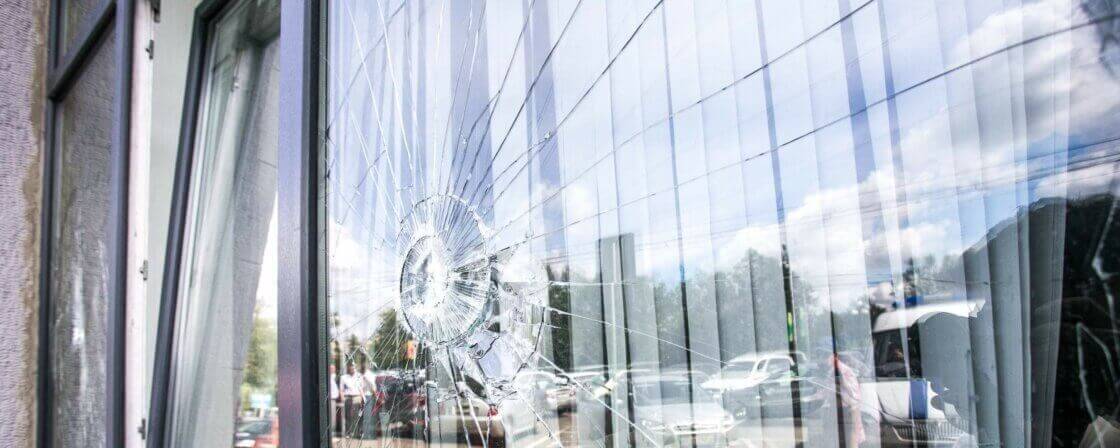Interest under the Civil Code
The concept of injury is broader than the relatively narrow concept of damage, which is also used. Damage is understood as a loss not only of property but also of non-pecuniary loss that may have occurred to you if you are the injured party as a result of a breach of a legal obligation by another person (the wrongdoer). We will look at what is behind these concepts in practice in a moment.
Tip for article
The new Civil Code uses the term damage exclusively in connection with property damage, which is relatively easy to quantify because it is the value by which the victim’s property is actually reduced.
Property damage
Property damage can mean both direct loss of the victim’s property and loss of profit. The difference between the two concepts can be explained using the example of a car crashed in an accident caused by another person. If the victim has crumpled sheet metal that he or she has to have repaired by a garage, we are talking about property damage. However, it may be the case that the owner of a non-running car is a craftsman who subsequently cannot run his errands and has to turn down several jobs before he can rent another one. In such a case, there will be lost profits.
It is therefore a pecuniary income which the craftsman in question could have earned in the absence of the accident. Traditionally, lost profits are encountered in business-to-business relationships. This may be the case, for example, where a supplier unexpectedly breaches an obligation and ceases regular supply of goods which are raw materials for the production of other goods. If these are unique goods for which it is difficult to find an adequate replacement quickly, then we can undoubtedly talk about lost profits.
Are you solving a similar problem?
Have you been harmed in a material or non-material way and the harmer has no intention of paying or otherwise making amends?
We will assess your case and draft a claim for compensation for you, which you will undoubtedly succeed in court.
I want to consult
- When you order, you know what you will get and how much it will cost.
- We handle everything online or in person at one of our 6 offices.
- We handle 8 out of 10 requests within 2 working days.
- We have specialists for every field of law.
Non-pecuniary damage
In addition to the “classic” damages, you may also suffer non-pecuniary damage, either to your personal rights or to your person as such. It can concern both a natural person and, in certain cases, a legal person. Returning to our example of a car accident, if one party has caused damage to another person’s health, we can talk about pain and suffering, social distress and possibly mental anguish (psychological harm).
Tip for article
Read how to claim compensation in a car accident.
Psychological harm
Psychological harm refers to a person’s mental state. It can include, for example, psychological suffering, emotional pain, anxiety or depression caused by a harmful event. For example, following a traumatic event such as a car accident, an individual may suffer psychological distress that affects their daily life and well-being.
Harm to health
Personal injury is then directly related to a person’s physical health. This includes injuries, illnesses or other physical consequences caused by a harmful event such as a car accident. Personal injury can also have long-term consequences, such as a reduced ability to work or the need for long-term medical care.
Other examples of non-pecuniary damage may be related to interference with human dignity, respect, honour, reputation, health and so on.
It should be added that the consequences of non-pecuniary damage may ultimately be felt in the victim’s economic sphere (for example, damage to health and its impact on future earnings).
In many cases, however, the quantification of non-pecuniary damage is on thin ice. While there are certain tables for pain and suffering which help us to determine the amount by means of scored injuries, there are no regulations which clearly set out how to assess, for example, the severity of the libel and the amount of damage caused. It is always based on an individual assessment of the case, the extent and severity of the injury. Case law and various similar cases that have already been dealt with by the courts and their conclusions may also play an important role.
Tip for article
The principles of compensation for damages (both pecuniary and non-pecuniary damage) and the procedures for claiming them have been dealt with in our separate article.
Non-pecuniary damage is closely related to the protection of personality under the Civil Code. It sets out a range of personality rights, including certain consequences that arise in the event of a violation. This concerns in particular the following topics:
- Protection of a person’s name – refers primarily to the first name and surname, possibly also other names or family name. Every person has the right to the protection and respect of his or her name.
- Pseudonym – the Civil Code enshrines the right of a natural person to use a pseudonym – for example, for a certain field of activity (typically artistic). If a pseudonym comes into force (e.g. Xavier Baumaxa or Xindl X), then it enjoys the same protection as a name.
- A person’s residence
- Personality of the person – the Civil Code grants protection to all natural rights of the person. The emphasis is on life, dignity, health, respectability, honour and privacy. If a person’s personality has been violated, the person concerned has the right to demand that the unjustified interference be refrained from or that its consequences be eliminated.
- Image and privacy – for example, a person’s image can only be disseminated with his or her permission.
- The right to mental and physical integrity – this includes, for example, the need to properly explain any procedure carried out on another person and to obtain their consent.
- The rights of a person admitted to a healthcare facility without his or her consent
- Handling of human body parts
- Protection of the human body after death – for example, the possibility or impossibility of performing an autopsy on the deceased, etc.
The fact that interference with personal rights, particularly in the case of celebrities, may not be worthwhile has already been felt first-hand by some tabloid media, which have already paid hundreds of thousands of euros for the lies they have told on their websites.
In addition to the protection of personality rights through the civil courts, there is also protection through the criminal law enforcement authorities. In the example of celebrity free-riding, the offence of defamation could also be involved. However, in order to constitute a criminal off ence, it is necessary that the allegation is false in the case of criminal proceedings. Compared to the protection in civil proceedings, this is a fundamental difference. In the case of protection, it may not only be a false allegation, but also an otherwise true allegation which is capable of producing effects as a result of the intervention of another which it would not otherwise have produced.
Non-pecuniary damage in criminal proceedings
It is clear that criminal law also deals with the concept of harm in several contexts. Firstly, within the Criminal Code, it helps to distinguish between the concepts of ‘grievous bodily harm’ and ‘bodilyharm‘, where grievous harm is understood to be, for example, mutilation or mental anguish, and its infliction presupposes the classification of the offence under a higher criminal offence.
The so-called adhesion proceedings allow the victim to claim both pecuniary damage caused by the offence and, where appropriate, non-pecuniary damage. In this way, claims such as pain and suffering, damages for loss of amenity, compensation for survivors or compensation for other non-pecuniary damage can be pursued.
Environmental damage
Other branches of law also deal with the concept of harm. Environmental law, for example, has recently begun to gain importance. The definition of ecological damage is contained in the Environmental Act as ‘theloss or impairment of the natural functions of ecosystems resulting from damage to their components or disruption of internal links and processes as a result of human activity‘. In this case of damage, too, environmental damage is seen as intangible, often difficult to quantify in monetary terms. It can also apply to environmental components that are not owned by anyone. What is specific is that the state should seek to remedy it, regardless of who is the real owner of the thing to which the environmental damage relates. In remedying the defective condition, restoration to its original state is preferred), followed by compensation, compensation and, as a last resort, financial compensation.
The association Climate Action CR is also seeking to remedy the current situation where the state is responsible for environmental protection but often does not do enough.
Summary
Damage is a broader term than injury, which refers only to property loss. Property damage includes direct loss, such as damage to property, and lost profits, such as the loss of income to a business due to a car not running. Non-pecuniary damage relates to interference with personal rights, such as pain, mental suffering or violation of honour and privacy.
The concept of harm is also used in environmental law, where environmental harm refers to damage to ecosystems caused by human activity. Restitution is preferred to financial compensation, with the State being responsible for remediation.




